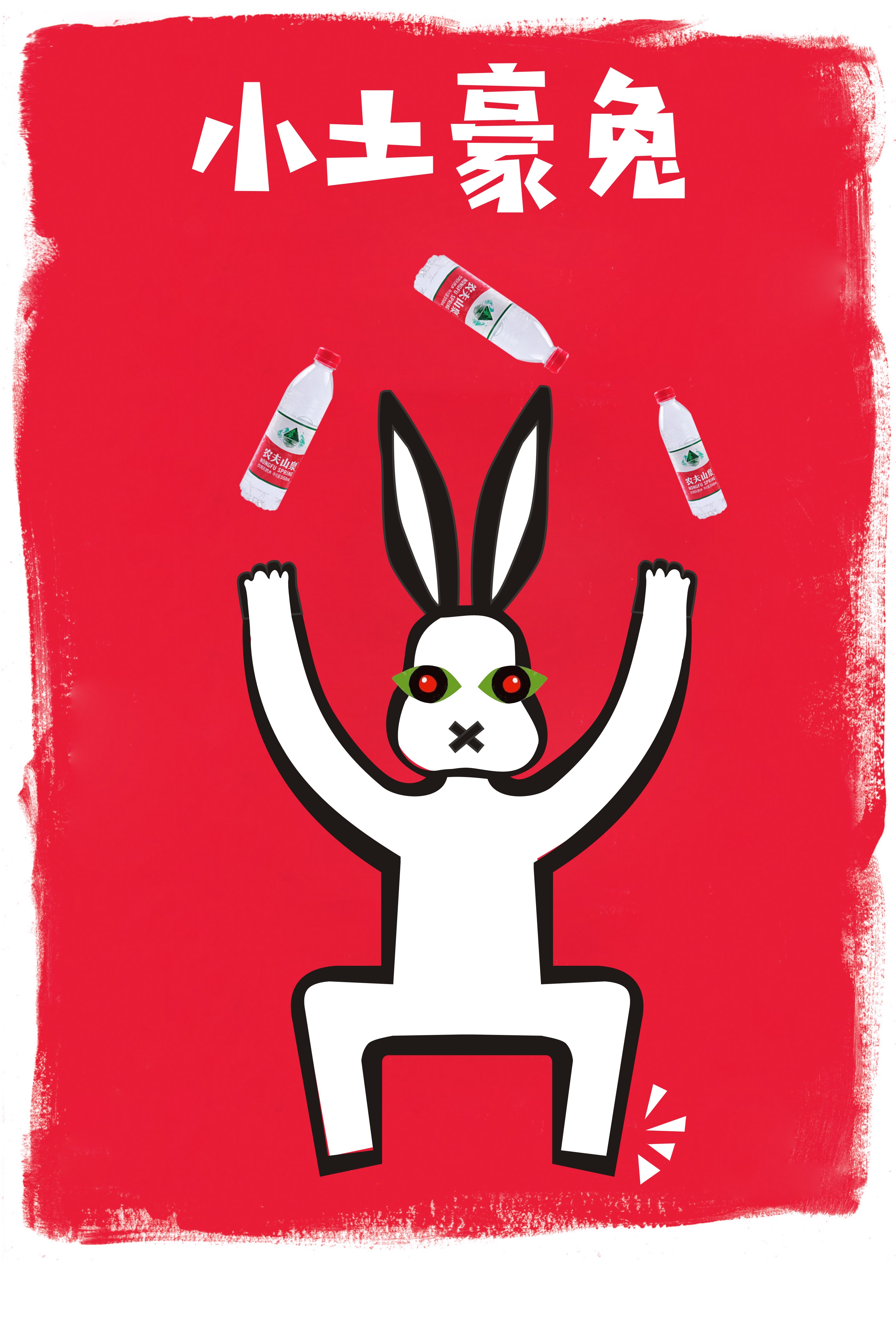 |
 |
(The Mandarin pronunciation of "Bring Salt" is Dai yan, which is homonymous with "endorsements" in Chinese. "I bring salt for myself" is an internet buzzword in China, means "I speak for myself".)
The "Bring Salt Project'' is an art project focusing on rural water pollution, initiated by Jianguo Xiongdi, or "Brother Nut" in May 2018. The original plan of the "Bring Salt Project" was simple—exchanged 10,000 bottles of Nongfu Spring (Nongfu means farmers in Chinese) bottled water with 10,000 bottles of polluted drinking water that farmers in Xiaohaotu Township, Shaanxi Province, China have been drinking, and transported the contaminated water to Beijing for exhibition. At the same time, 10,000 netizens in the city were invited to endorse 10,000 bottles of contaminated drinking water, which aroused public attention to the incident. After arousing the attention of the local government, the original plan had to be suspended. In the process of thinking about alternatives, Jianguo Xiongdi had a deeper understanding of the village and had more contact with villagers. Through the joint participation of domestic and foreign media, NGOs, lawyers, other enthusiastic friends, and local villagers, the project gradually evolved from a one-off performance art solely from the artist's perspective into a long-lasting and in-depth social action that integrates multiple art forms, relaying the villagers’ ongoing reporting efforts, and finally prompting government officials including the Ministry of Ecology and Environment to respond within a short period, which eventually led the government to implement relevant measures to improve villagers’ water conditions.
At present, some local government officials involved have been suspended from duties and some managers of the enterprises involved have been punished. However, the government has not admitted that Sinopec and China Coal have caused local environmental pollution, and they would not be responsible for the abnormal deaths of local livestock, abnormal illnesses of villagers, and overall damage to the ecosystem. The artist continues to pay attention to the situation in Xiaohaotu Township. The rapid response and rapid action experience accumulated in the previous stage of the "Bring Salt Project '' enables the artist to continue to find ways to intervene in the situation in Xiaohaotu Township. The following is based on the timeline to sort out the discourse space, ethical relationship, art form, and connection method created by this project in social and ecological issues.
Xiaohaotu Township is located in Yulin, the northernmost prefecture-level city in Shaanxi Province, China, and the southern edge of the Maowusu Sandy Land (Mu Us Desert). It is a typical sandy grassland area. It mainly consists of sandy land and woodland, covering an area of more than 500 square kilometers. The villagers mainly obtain water through wells. In recent years, the well water has an obvious bad smell, the water body has turned yellow, and there are sediments. Sheep and trees began to die in large numbers, and more and more villagers became sick. Local villagers suspected that the pollution was caused by the impact of natural gas wells and coal mines. Xiaohaotu Township is located in the Daniudi gas field, there are many natural gas wells. Strong alkaline mud and flow back fluid will be produced during the drilling of natural gas wells, which would cause pollution if not handled properly. At the same time, the locations of three coal mines in Wushen Qi, Ordos, Inner Mongolia–––Menkeqing Coal Mine, Mudu Chaideng Coal Mine, and Bayangol Coal Mine are very close to Xiaohaotu Township, only separated by a road. Since 2015, coal mines have began to discharge sewage to Xiaohaotu Township, as the landscape of Shaanxi is much lower than that of Inner Mongolia, the sewage quickly spread in the township and flooding a large amount of arable land. Because the sandy surface layer of Xiaohaotu Township is loose, sewage can easily enter the underground water level directly.
Xiaohaotu Township became the place where the "Bring Salt Project'' was implemented purely by accident. In May 2018, Jianguo Xiaongdi participated in the "Nine Press Conferences'' art project curated by Zheng Hongbin. This project invited different artists to intervene in social events by treating art as a medium. Jianguo Xiongdi has been concerned about environmental issues. In 2016, he implemented the "Project Dust" in Beijing. He spent 100 days dragging a vacuum cleaner through the streets and alleys of Beijing to collect dust in haze days. He made a standard brick by the collected dust and put the brick into construction sites as a building material. In the "Nine Press Conferences”, he wanted to do a water-related project: "Bring salt”, the most direct meaning is to invite 10,000 netizens in the city to speak for 10,000 bottles of sewage in the countryside. Another meaning is adding some salt to the absurd reality. Many people living in cities have no experience of living in the countryside and do not know what kind of water the real farmers drink. Many people think that the countryside is as beautiful and poetic as nature in the advertisement of Nongfu Spring water, a well-known brand of bottled water in China. There is a widely spread slogan in the Nongfu Spring advertisement called "Nongfu Spring is a bit sweet".This slogan is the dream of some people: peasant women, mountain springs, and some farmlands. But in fact, the real countryside is not poetic at all, and the real countryside is cruel. How cruel is it?–––––There are 570 million farmers in this country, of which 280 million farmers whose daily drinking water quality is not up to standard. More than 200 cancer villages are officially recognized by the Ministry of Environmental Protection, and there are many cancer villages that have not been discovered or have been hidden. As the "Nine Press Conference" project was started in Xi'an, the artist accidentally checked the website of the Environmental Protection Department of Shaanxi Province and found complaints from villagers in Xiaohaotu Township against the pollution of groundwater by Sinopec North China Branch. He decided to investigate in Xiaohaotu Township and planned to fill the family's daily drinking water into empty mineral water bottles and bring them to the city for exhibition.
On May 20, Jianguo Xiongdi went to the village for investigation and visited house to house. As the identity of the artist was quickly exposed and the news leaked, the villagers were warned by the village cadres not to participate in the project. With the help of villager Lao Wu, the artist reached out to more villagers and conducted investigations through the WeChat groups and the villagers’ connection. On May 29 and May 30, reporter Da Peng and curator Zheng Hongbin also entered the village.
In Xiaohaotu, water pollution is an open secret. I walked into Dahaotu Village. As an outsider, I borrowed water from the villagers. Three consecutive villagers said no. They were very alert. I called the secretary of Shibukou Village to learn about water pollution. The secretary directly said that they were all drinking tap water and denied that they were drinking groundwater. Just the day before, the village director of Shibukou Village told me that water pollution is serious. There is water pollution in the entire township. They still lack 2.8 million (yuan)to bring the 100-meter-long well water they had drilled to the villagers. In Zhanggaotu Village, I was suspected of stealing dogs by the village head. When I asked about the water pollution, the village head didn’t answer and asked me to contact the township government. On June 1, we heard a village cadre say: If we try to understand the water pollution situation, they will arrest us. In the past two years, the villagers intensively reported to the village, township, and city and called the Environmental Protection Bureau, but had no effect.
—— "About the Water Pollution Incident of Xiaohaotu", published on the official account of "No. 22 Power Station", which was shut down afterward.
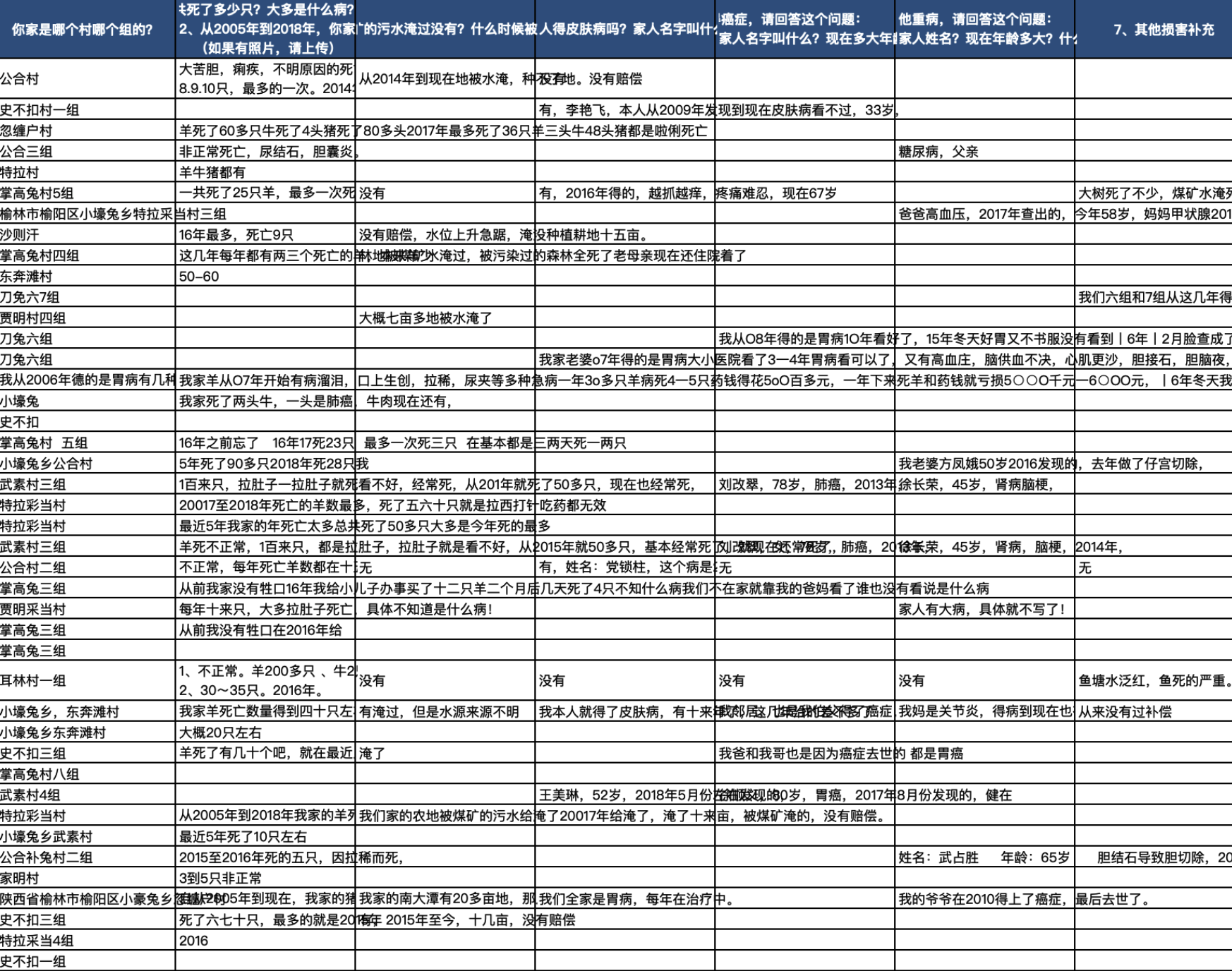 |
|
The artist started collecting information in the village. "It was not easy to contact villagers and gain the trust of the villagers at the beginning was not easy; before that, the villagers kept reporting to the village, township, and district, and even there were some villagers spent money to invite reporters to come for investigation (of course, reporters came for the money are definitely not reliable). They hoped someone to investigate, but they were also very cautious. In the first few days, I didn’t make any progress in Xiaohaotu Township. I messaged a lot of people on Weibo and looked for people nearby through WeChat, most of them didn’t respond, some people’s first reaction was that I was a liar. The turning point was in a small noodle restaurant in a village. An old man from Zhanggaotu Village was also in this small noodle restaurant. When he heard that I wanted to learn about water pollution in Xiaohaotu from other people, he thought I was "seeking the masses to understand". This kind of investigation method is more trustworthy (because some people had come to understand the situation of water pollution before, but they were all carried by the village cadres, and in the end, there were no more follow-ups). He was very emotional when it came to water pollution. Through him, I successively found other villagers, including Wu Yanrong. Wu Yanrong was the first villager whose real name appeared in the Xiaohaotu water pollution incident." |
Since the initial water exchange plan could not be realized, the artist changed the plan, and with the help of villager Lao Wu, he found the wells of a villager's house in the 7th group of the village. The well is about 15 meters deep, and there are several gas wells not so far away. In here, 14 villagers filled 10,000 bottles of daily drinking water into the empty Nongfu Spring bottles. The artist was worried that the village cadres would do tricks in the water after the leakage of the news, so he drank several cans of Red Bull with Lao Wu that night and watched the bottled water with three dogs all night.
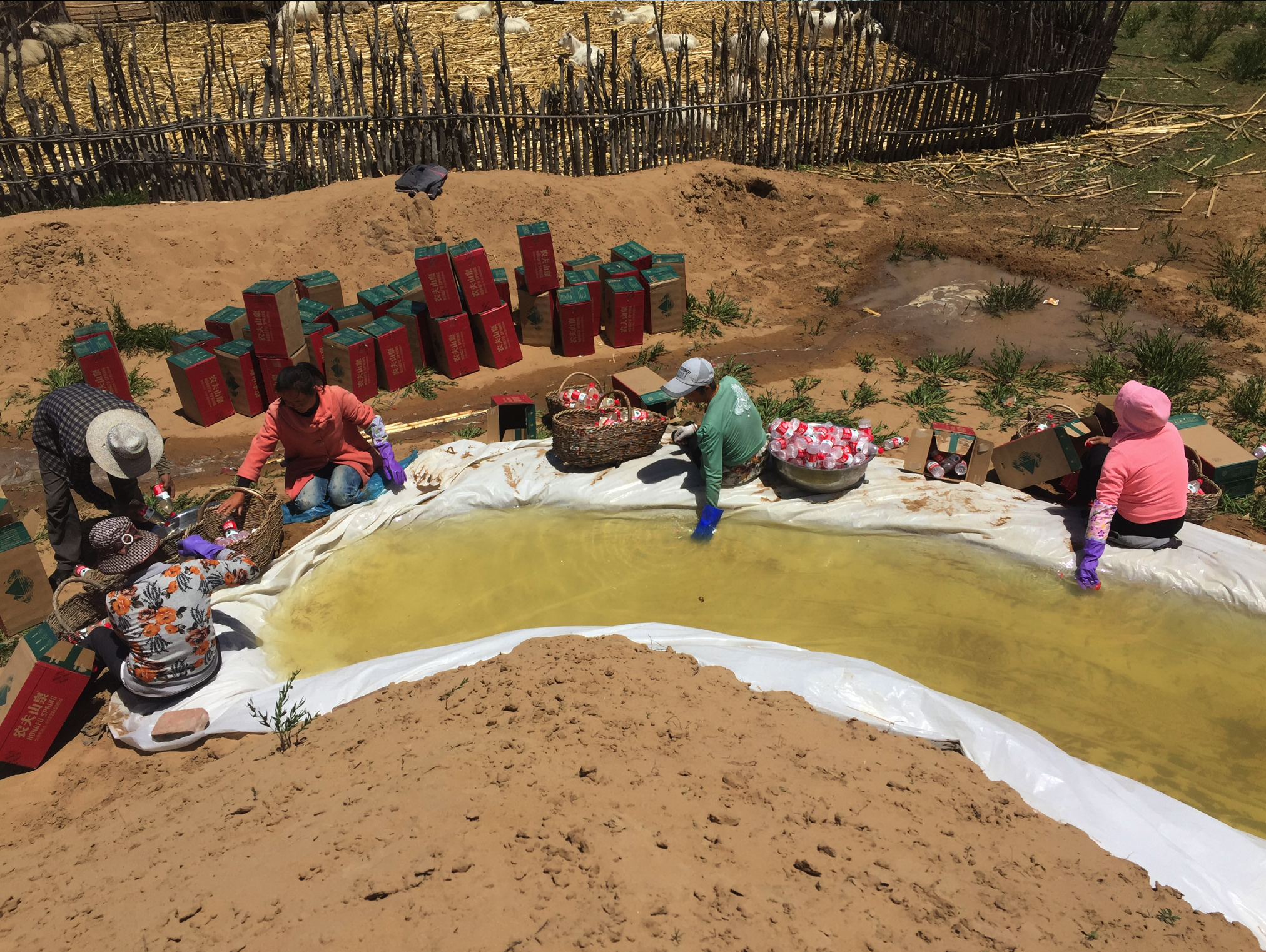 |
|
Two cents for a bottle of water, a total of 2,000 yuan, some villagers did not collect the money.(the photo was taken by Xia Dapeng) |
In order to prevent being blocked, water vehicles bypassed Xiaohaotu Township to Yulin and then transported from Yulin logistics to Xi'an and Beijing.
The heavy metal mineral water supermarket opened in the 798 Art District and was curated by Zheng Hongbin. During the exhibition in Beijing, the Beijing News "We Video" broadcasted "Nearly Ten Thousand Bottles of Contaminated Water Are Exhibited in Beijing: the sewage in your eyes, have been drinking by villagers for more than ten years", which was watched by more than 10 million people. On the 11th day of the exhibition, the mayor of Xiaohaotu Township and the deputy minister of the Publicity Department of Yuyang District came to Beijing from Shaanxi to visit the exhibition.
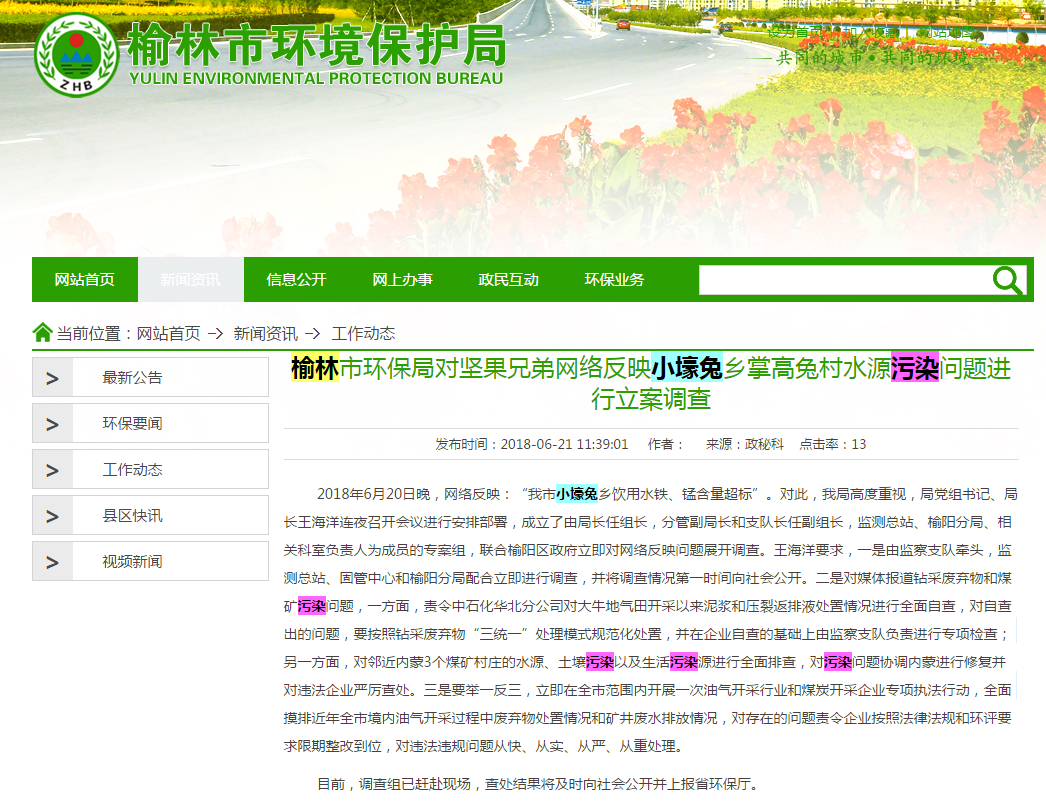 |
|
The Yulin Environmental Protection Bureau issued an official statement in response to the article "About the Water Pollution Incident of Xiaohaotu", stating that it will start an investigation immediately. |
The website of the Environmental Protection Bureau of Yulin City, Shaanxi released the progress of the investigation. The results of sampling and monitoring of drinking water from the houses of four households in Zhanggaotu Village showed that the iron and manganese content in the water exceeded the standard to varying degrees, with the maximum exceeding 4.2 times. A day later, sampling and testing at the Yulin City Environmental Monitoring General Station showed that the drinking water at four points including Zhanggaotu did not meet some of the requirements in the national standard for groundwater quality standards.
The legal department of the Nongfu Spring Company called Jianguo Xiongdi, requesting that the brand be removed and the Nongfu Spring Supermarket should be closed, otherwise it would be handled in accordance with the law.
Nongfu Spring complained against the artist's article "Bring Salt Project: How to Build a Nongfu Spring Supermarket with Probably the Coolest and Heaviest Metal in China" published on the artist’s public account "No. 66 Power Plant" for infringement of reputation/goodwill and requested that this article be deleted.
The Chaoyang Branch of the Beijing Administration for Industry and Commerce seized Nongfu Spring Supermarket and seized 87 boxes of more than 7,000 bottles of contaminated water ( Until today, the Beijing Administration for Industry and Commerce has been "keeping" these exhibits and has not made any rulings on the so-called trademark infringement).
When the villagers of Xiaohaotu heard about it, they spontaneously filled more than one hundred bottles of their contaminating water in Nongfu Spring bottles, and each bottle of water was signed with their own name. Previously, netizens in the city spoke for their contaminating water. This time they spoke for themselves. However, before they sent the water from Tuke Town in Inner Mongolia to Beijing, the police in Tuke Town quickly seized the water at the ZTO Express.
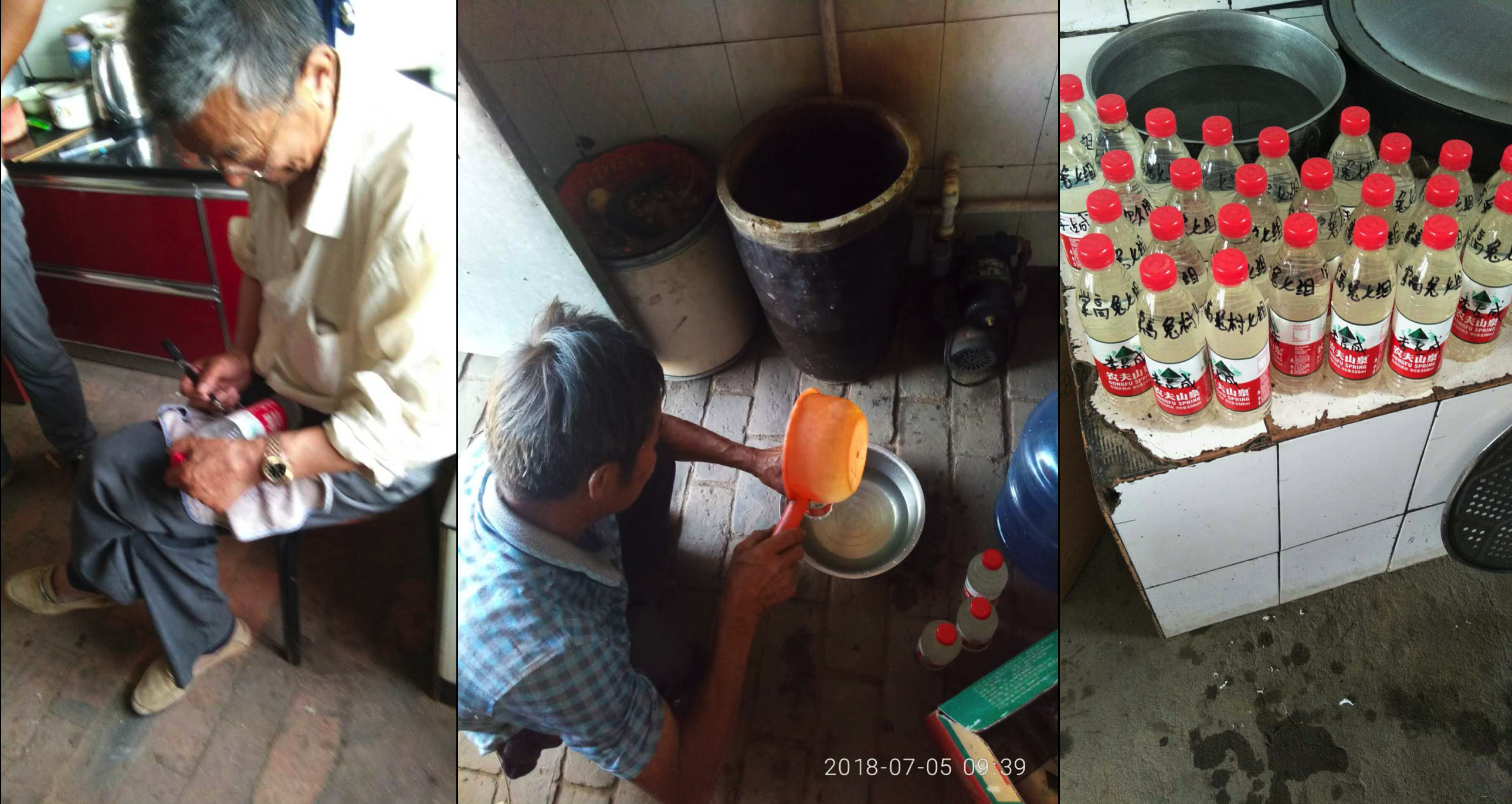 |
Jianguo Xiongdi and the members of the Dust Lost Band traveled from Yulin to Xiaohaotu to hold the first Xiaohaotu Heavy Metal Music Special. In order to grab the audience, the local government hosted the first Xiaohaotu Township Tourism Cultural Festival on the same day. However, the artist never thought of grabbing the audience with them from the beginning. Their audience was rather special, made up of one or two hundred sheep (as a sheep in Xiaohaotu Township, they often die from kidney stone disease or high fever due to water pollution). On the way to the performance venue, the artist was chased by the police and other relevant departments. They avoided the main road and drove from the neighboring county town to the boundary of Xiaohaotu Township, but could not reach the original venue. Finally, they found two hidden places and started the silent version of the first Xiaohaotu Heavy Metal Music Special. The audience was Xiaohaotu, a heavily polluted land.
Sinopec North China Oil & Gas stopped drilling four wells in Xiaohaotu Township. The local government invited the Environmental Risk and Damage Evaluation Research Center of the Environmental Planning Institute of the Ministry of Environment to evaluate the water quality of Xiaohaotu Township and completed the collection and testing of water samples at 87 water intake points in 17 villages in the township. At the same time, the government began to drill deepwater wells in 7 villages and installed more than 3,000 water purifiers in other villages. They said that the centralized water supply project in the remaining villages of Xiaohaotu Township will be launched as soon as possible to completely solve the safety problem of drinking water for the people. However, the impact of natural gas wells and coal mines on the entire ecosystem, and the losses caused by pollution (cancer, skin diseases, sheep deaths, reduced food production, and pollution have caused more profound health impacts on more than 10,000 people in Xiaohaotu Township, including more than 400 children in elementary school and kindergarten, etc.), and how to rebuild the entire Xiaohaotu Township, these problems have not yet formed a long-term solution.
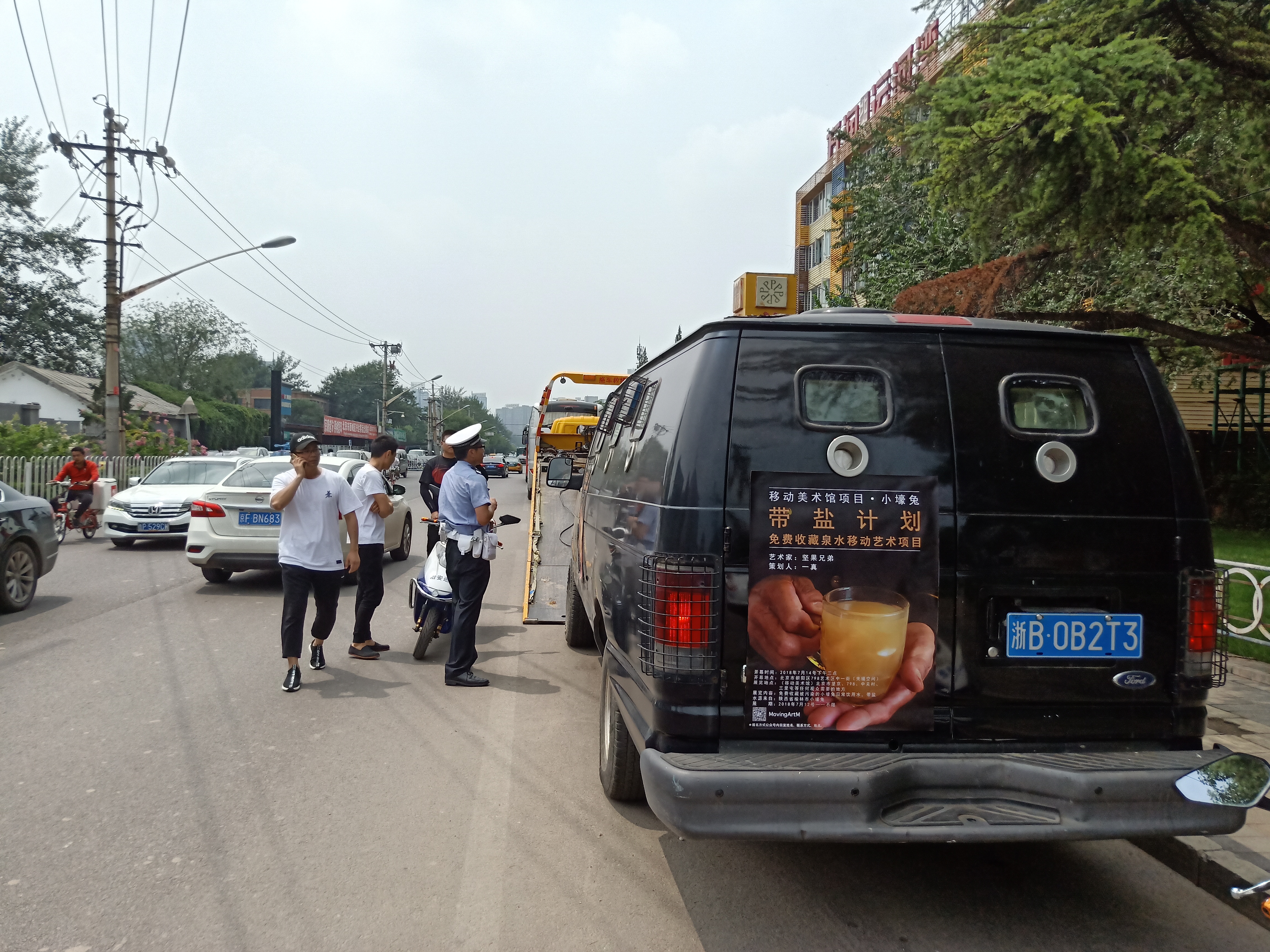 |
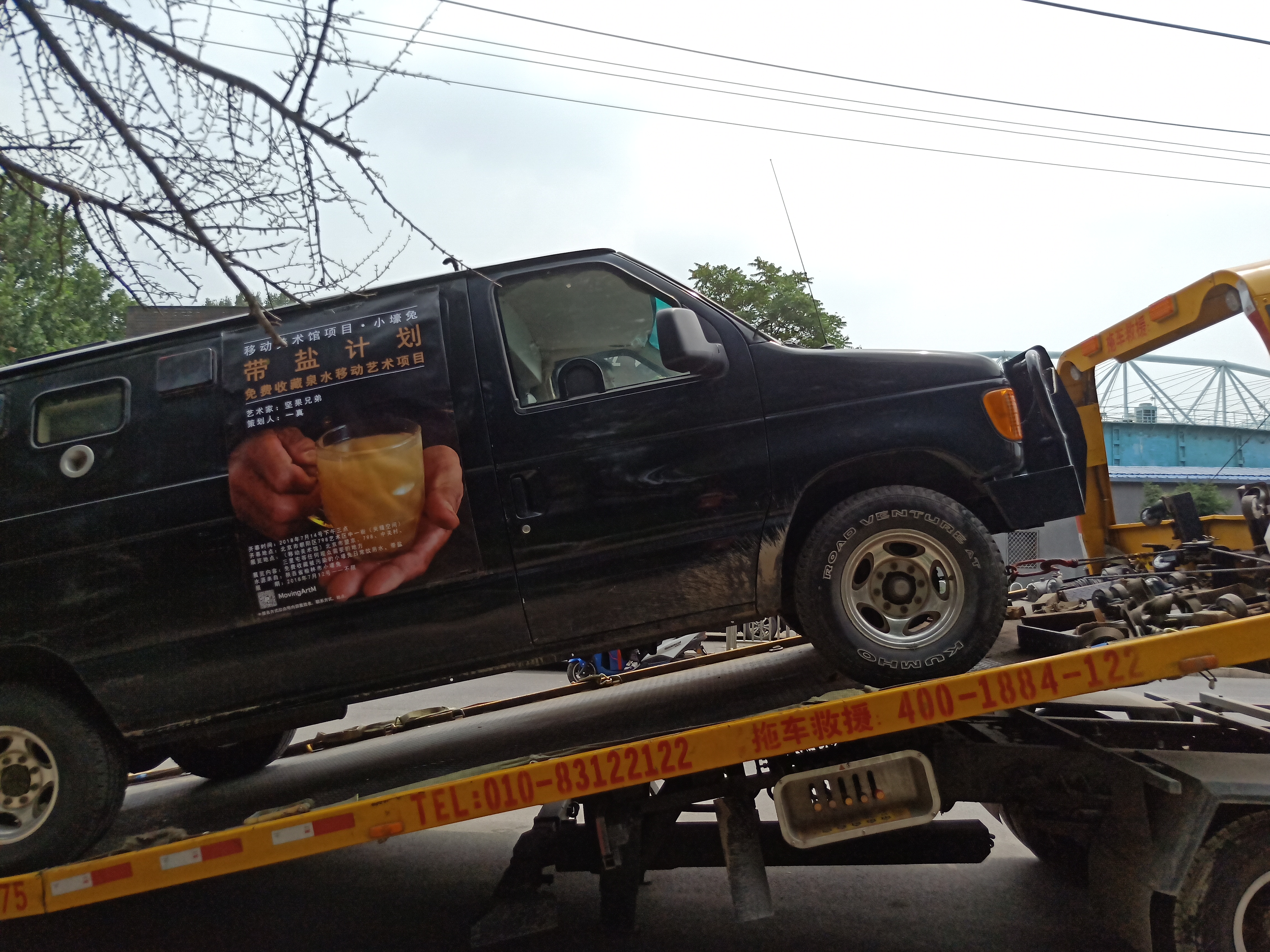 |
|
On the 9th day after the Nongfu Spring Supermarket was seized, the artist began the exhibition again, displaying hundreds of bottles of contaminated water on an explosion-proof vehicle. These bottled waters were not removed after being seized by the Administration for Industry and Commerce last time. The exhibition was named "Mobile Art Museum Project·Xiaohaotu". The vehicle started and stopped inside and outside 798 Art Space. On the third day of the exhibition, the car was seized by the traffic police on the grounds that there was no permit to enter Beijing. |
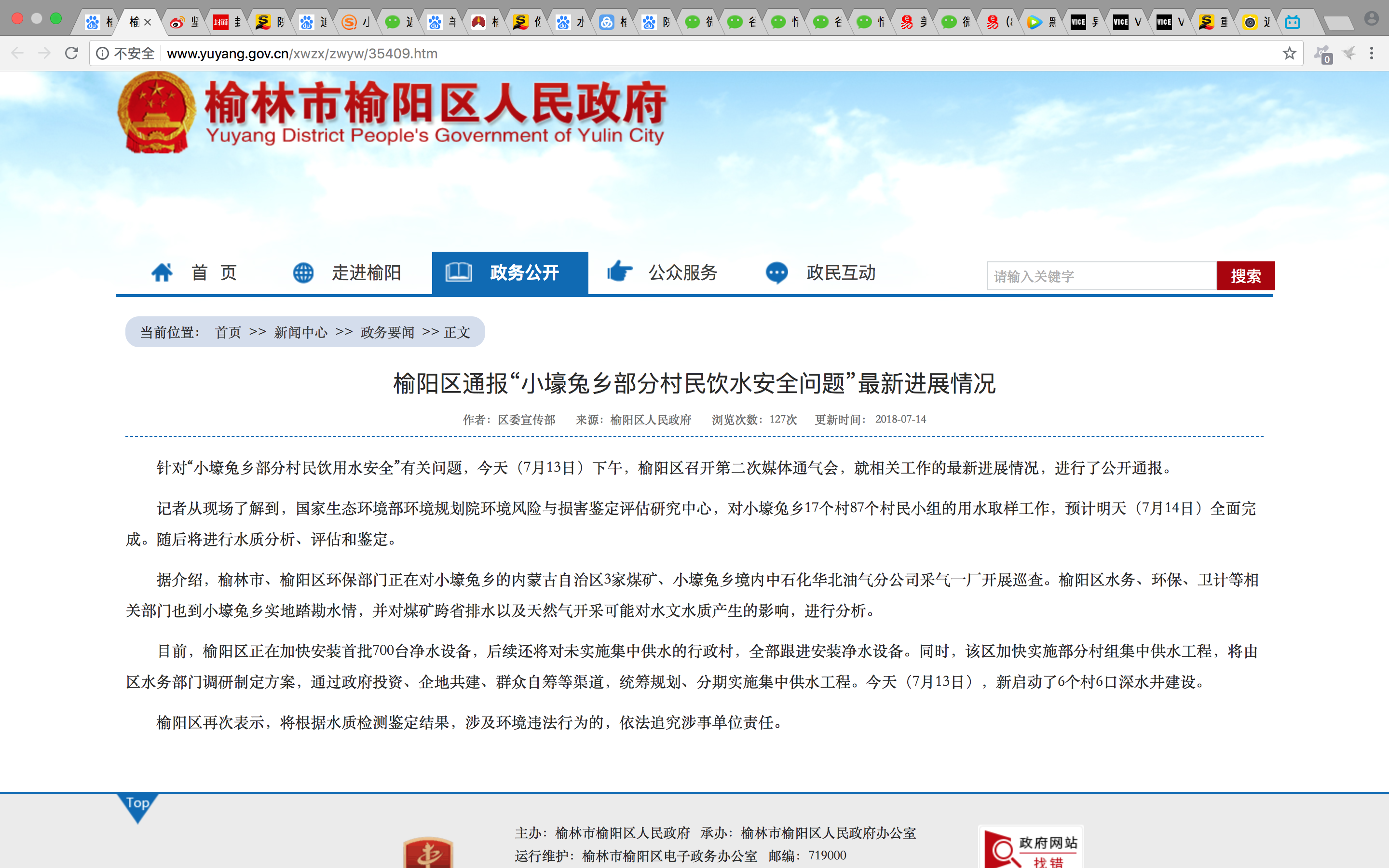 |
|
The Yuyang District Government announced the progress of the treatment again |
The local government’s announcement: the Yuyang District Government will investigate the responsibility in accordance with the law based on the water quality evaluation results of Xiaohaotu. After negotiating with the Yuyang District government, the Wushen Qi government ordered the three coal mines, Men Keqing, Mu Du Chaideng, and Bayangole, to suspend production for rectification on June 30, and demanded immediate measures to stop drainage and to ensure that the well water is treated in accordance with the specifications and no leakage is allowed.
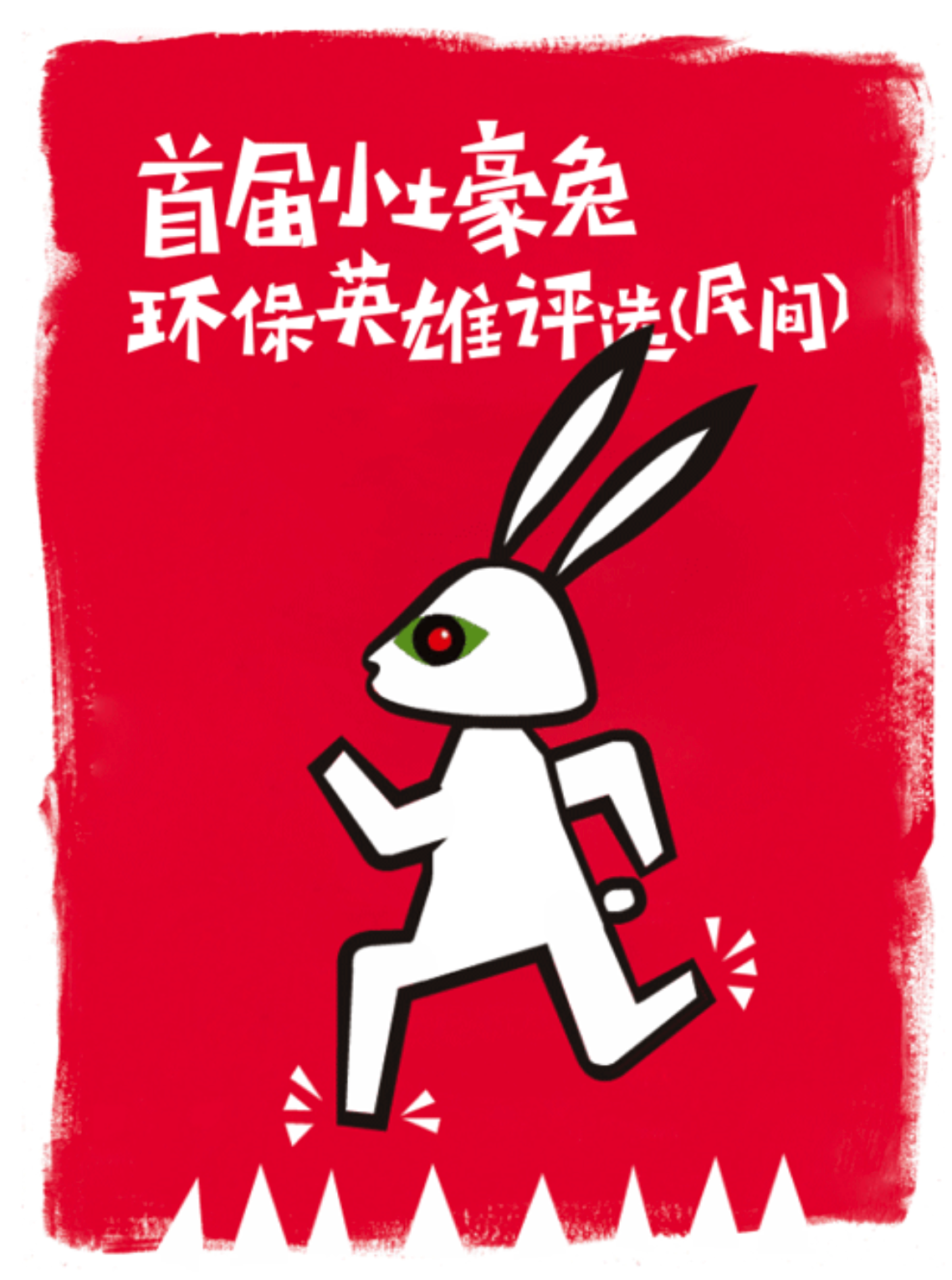 |
The little bunny kept running, hitting the wall without looking back, and stood up again when he fell. This picture aptly describes the struggle of many villagers in Xiaohaotu Township over the years against water pollution. In August 2018, Shi Ci, Hongbin, Wu Laobai, iago, Lan Xiaojie, Ai Wute, IVY, Jiejue, Jianguo Xiongdi, and Ankang Green Qinba Environmental Charity Service Center jointly launched the "Election of Environmental Heroes in Xiaohaotu Township (civil election)" on the WeChat platform. ". "In the Xiaohaotu water pollution incident, many outside forces participated, including many enthusiastic friends, professional media, professional NGOs, etc. But the people who bear pressure and suffering, the people who participate the most, the people who constantly make suggestions, actions, and appeals––––are Xiaohaotu people... In the entire Xiaohaotu water pollution incident, in addition to local volunteers, they provided us with a lot of information and evidence of water pollution. Many of them were also intimidated and questioned by relevant departments, but they still withstood these pressures and continued to provide evidence for solving the water pollution problem."
For many years, Lao Wu has been helping villagers report water pollution to the government, assisting reporters in investigating and collecting evidence, was inter-provincial arrested for participating in environmental protection activities, and assisting artists in carrying out operations. Lao Wu from the 7th group of the Zhanggaotu Village, Xiaohaotu Township was elected with 4193 votes and won an award of 6666 yuan in this Environmental Heros election. After that, the project also helped Lao Wu, who was accused of “occupying agricultural land”, to raise legal fees. "You are on the side of the village, I am standing on Shaliangliang (a place in Shaanxi Province), every month I see the sewage invading, and the villagers are still thinking about it. Look far from Shaliangliang, look at the local specialties of Xiaohaotu." This is a small song composed by Lao Wu himself. Previously, after the land was flooded and the pastures that could not be cultivated and the sheep grazing field were inundated, he worked in the Mudu Chaideng Coal Mine for three months, but he gave up because he could not stand the dampness in the underground.
 |
|
Screenshots of voting |
The synergy of the "Bring Salt Project", villagers' actions and media effects have greatly accelerated the process of water pollution treatment. But there is another side to the matter. Although people began to use water purifiers, the water used by farmland and sheep are contaminated. The government did not directly respond to the deaths of contaminated livestock and illnesses of villagers, nor did it propose a plan for the treatment of local ecological damage. At the same time, according to a news report in Southern People Weekly,when the government decided to put water purification equipment and deep wells as a priority for financial resources, plans to drain water from coal mines were shelved, which disappointed some villagers’ expectations. Meanwhile, the problem of burying mud anywhere near natural gas wells has not been further dealt with. It is difficult for the "Bring Salt Project" to be further promoted at this time, and the artists have also received special reminders from relevant departments.
Although no further action can be taken on the water pollution problem, the project still followed the issue for a long time and initiated events with previous experience. For example, due to a large amount of construction waste, domestic waste, and coal mine waste generated by the residents’ demolishment, starting from July 2019, the Mudu Chaideng Coal Mine in Inner Mongolia flattened the sand dunes and secretly dumped a large amount of waste in Xiaohaotu, Shaanxi, for more than one month, about 20 acres of forest were destroyed, and the volume of garbage exceeded 2,000 cubic meters (about 10 meters wide, about 100 meters long, and about 2 meters thick). According to villagers, in September 2019, the Yuyang District Environmental Protection Bureau, the Civil Affairs Bureau, and the village party secretary of the village where the Mudu Chaideng coal mine belonged all visited the garbage site. But more than 20 days have passed, there was no reply or any progress. Jianguo Xiongdi immediately launched the activity of "raising funds for the chairman of the Du Chaideng Coal Mine to fly to Shanghai to learn waste sorting", and set a donation amount of one yuan per person to mobilize more people to participate. The money was quickly raised, but before it could be delivered to the chairman, the local government initiated the compensation process, paying 200,000 yuan to local farmers, and preparing to repair 6.3 kilometers of roads to transport garbage.
As the oal of solving specific problems cannot be declared, art as a medium and action needs to rely on timing and the joint efforts of different movers to get close to the target, invent methods in continuous practice on-site, and better assist in the information spreading and rely on the villagers to form their own teams and put pressure on related parties. Water pollution, garbage dumping, and other issues also reflect from different directions that ecological problems often appear in a systematic manner, and are often linked to problems caused by administrative methods (such as cross-provincial governance) and government policies. This kind of passive coping is unable to stop other unpreventable injuries. The boundary between the perpetrator and the victim is not obvious, and the loss is difficult to calculate with a single economic dimension––––in the above garbage dumping incident, the collapse of the house was caused by coal mining, so the mine needs to be demolished and relocated the residents of the coal mine district. At the same time, a large number of sand willows drowned by the drained mine water were planted during the sand fixation and afforestation movement in the 1970s, and it took two generations of great efforts. From this perspective, art can question and carry out works in a very wide range of fields.
Image and video courtesy of the artists. All rights reserved.
Attached:
Links related to the Xiaohaotu water pollution incident:
June 21
“Yulin Environmental Protection Bureau initiated an investigation into the water pollution problem in Xiaohaotu Township reported by the Jianguo Xiongdi online”
(the link is no longer available)
June 22
"Water Pollution at the Border of Shaanxi and Inner Mongolia, China丨Investigation of Inter-provincial Pollutant Discharge from Coal Mines in Inner Mongolia"
(the link is no longer available)
Duowei Monthly / Xia Pengcheng
June 29
“Nearly Ten Thousand Bottles of Contaminated Water Are Exhibited in Beijing: the sewage in your eyes, have been drinking by villagers for more than ten years”
Beijing News / Li Ningyuan, Wu Qi
June 29
"Polluted Water Exhibition Prompts Official Action"
Sixth Tone / Yin Yijun
June 30
"Illustration|A large amount of sewage from coal mines at the border of Shaanxi and Mongolia leaked into the desert, covering an area of over 60 World Cup football stadiums"
Tianjin Green Collar / Dabing
June 30
"The junction of Shaanxi and Mongolia––large amounts of coal mine sewage discharged into the desert"
Green Qinba / Jianghan
July 1
"Removal of the trademark––Nongfu Spring's position in the "Xiaohaotu Water Pollution Incident & Nongfu Spring Supermarket"
Jianguo Xiongdi
July 4
“Follow-up of nearly ten thousand bottled sewage exhibition: Suspected infringement was complained by Nongfu Spring, the exhibition was stopped by Administration for Industry and Commerce”
The Beijing News / Wang Kunpeng
July 6
"When artists began to pay attention to rural water pollution, the water from Xiaohaotu hits our vision like this"
China Biodiversity Conservation and Green Development Foundation
July 9
"Sinopec North China Oil & Gas responds to drinking water pollution in Xiaohaotu Township, Yulin: drilling has been stopped"(the link is no longer available)
The Paper
July 10
"The Howling and Struggle of a Little Filthy Rich Rabbit––– About the First Xiaohaotu Heavy Metal Music Special Show"
Jianguo Xiongdi
July 10
"Yulin, Shaanxi: A Crackdown Sewage Movement Caused by a Performance Art"
(the link is no longer available)
Cao Yanhua
July 11
The "Provocateur" Jianguo Xiongdi’s emergency and his temporary supermarket
(the link is no longer available)
Bian Ka Column
July 11
Bring Salt Project | ARTFORUM Exhibition Review / Zeng Hong
July 13
"With 9,000 Bottles of Dirty ‘Spring Water,’ a Chinese Artist Gets Results"
NYTimes / Olivia Mitchell Ryan, Zoe Mou
July 14
"Tainted water exhibition roves around Beijing after initial shutdown"
AFP / Pak Yiu
July 16
"Message in 10,000 bottles: Artist highlights water contamination in China"
Reuters / Muyu Xu,Christian Shepherd
July 16
Attention | Xiaohaotu Township Police Station in northern Shaanxi arrests pollution whistleblowers across provinces!
Green Qinba
July 17
"Inter-provincial arrest of Wu Yanrong––a historic moment in the Xiaohaotu water pollution incident"
Jianguo Xiongdi
July 19
"Mirror image of water pollution on the border between Shaanxi and Mongolia: coal mines discharge pollutants across provinces, and villagers drink groundwater that exceeds standard all the year-round"(the link is no longer available)
Sohu Rear Window / Lu Meng
July 22
"Behind the 9000 bottles of sewage, the magical reality of the countryside in northern Shaanxi"
Shengyin missingvoice
July 23
"Ten thousand bottles of mineral water are exchanged for sewage, this village has attracted global attention due to inter-provincial sewage discharge"
Gu Yu Image / Xia Pengcheng>
July 26
"Tracking down the culprit of groundwater pollution: a sandy water town, undercurrents under coal"
Southern Weekend / Yang Kaiqi
July 26
"The Ministry of Environment is concerned about water pollution in Xiaohaotu Township, Yulin, Shaanxi, and urges local governments to deal with it strictly in accordance with the law."
(the link is no longer available)
The Paper
July 30
"Survey of Pollution in Xiaohaotu Township, Yulin, Shaanxi: People get strange diseases and sheep die in groups"(the link is no longer available)
Crime Squad No. 37 / Wang Ruifeng and Li Xiangmao
July 31
"Mirroring Pollution in Xiaohaotu Township, Yulin, Shaanxi: The first whistleblower was controlled by the police"(the link is no longer available)
The Beijing News / Wang Ruifeng and Yin Yafei
July 31
"3D: Suspected groundwater pollution in Xiaohaotu Township, Yulin, Shaanxi, oily well water and large numbers of flocks died"
The Beijing News / Zhao Minhui and Wang Yongquan
July 31
"Ushen Qi Disposal of "Xiaohaotu Township Water Pollution" Public Opinion: Detention of 4 Coal Mine Managers"(the link is no longer available)
The Paper
August 6
"After groundwater pollution was exposed by performance art"
Caixin / Qin Ziyi
August 8
"Xiaohaotu at the Border of Shaanxi-Mongolia: Ten years of pollution, sheep dead and people sick, how much responsibility should Sinopec bear for mud pollution?"
Jianguo Xiongdi
August 10
"The Story of "Little Xiaohaotu”"
Zheng Hongbin
August 16
The first election of Xiaohaotu environmental protection heroes (civil election)
August 27
"Investigation of Water Pollution in Xiaohaotu, Shaanxi: Mud Pollution from Sinopec, and Coal Mine Wastewater Discharge"
Sanlian Life Weekly / Liu Chang
August 30
"Two detentions of an "environmental protection hero" elected by 4193 votes"
Zheng Hongbin
August 31
Yuyang District notified the latest progress of "Drinking Water Safety Issues in Some Villages of Xiaohaotu Township"(the link is no longer available)
September 16
"Water Pollution Remediation Started by a Performance Art"
The Paper / Ming Que
September 28
"After the spotlight, water pollution in Xiaohaotu, Yulin, Shaanxi"
Southern People Weekly / Ouyang Shilei
September 30
"The investigation of Xiaohaotu's water pollution has been completed, the document says that human and animal deaths are normal"
Caixin / Qin Ziyi
November 8
"China’s fracking push leaves trail of dirty water woes"
Financial Times / Emily Feng
December 4
"Artist fills 10,000 bottles with polluted water for exhibition"
The Seattle globalist / Xiang Shen